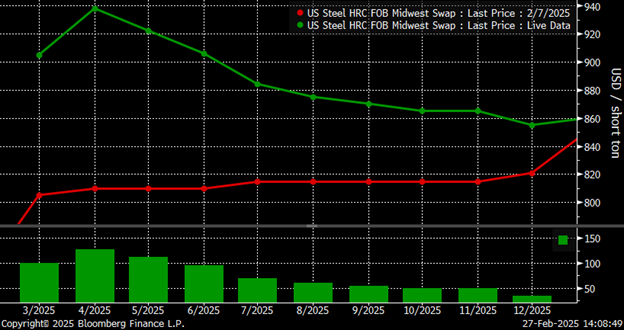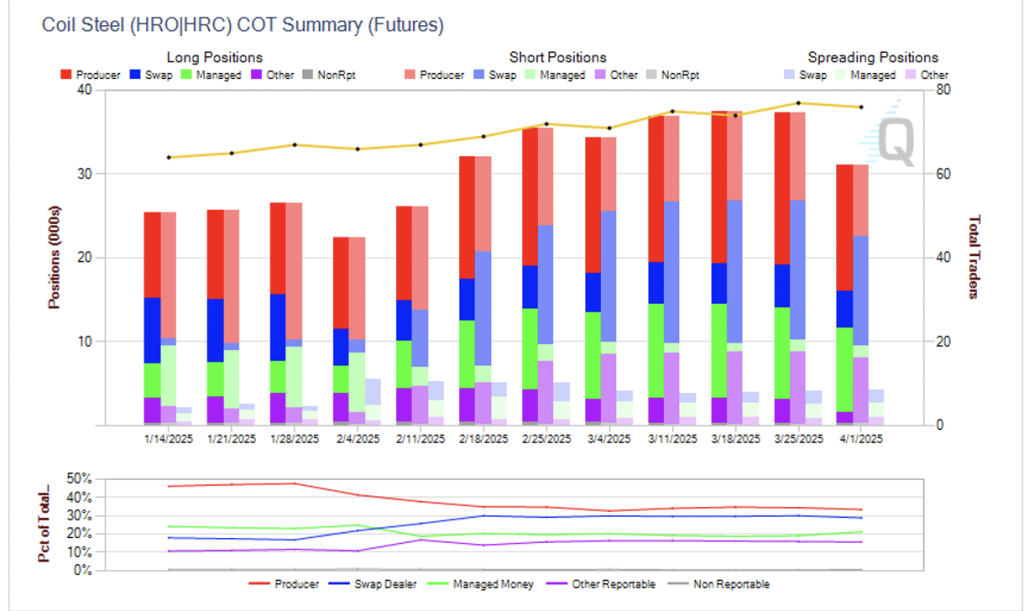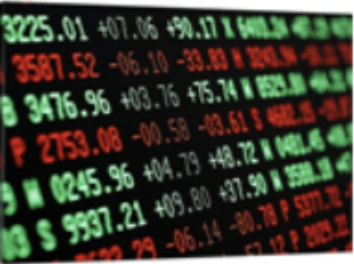Futures

HR Futures: Traders' views mixed as market navigates tariffs
Written by Mark Novakovich
April 10, 2025
There’s been a lot ink spilled over the past several weeks regarding US tariffs. And the overall macro environment and news cycle have weighed on trade volumes and prices in the US ferrous derivatives markets.
While the backwardation structure that materialized beginning in February continues to roll forward, flat prices across the curve are lower. Market participants remain largely focused on nearby shipment periods. They are said to be purchasing tonnage on a hand-to-mouth basis, weighing on futures activity.
HRC
Prices on the front-end of the CME hot-rolled coil (HRC) futures curve, in the Q2 months, have fallen the most dramatically since the run-up that began in earnest in January.
May’25 HRC futures reached a contract high on March 4 at $945 per short ton (st). Since that time they have retreated by over $100/st, settling at $829/st as of today.
The drop in June’25 HRC futures is even more pronounced. They have fallen by $150/st from a contract high at the end of February ($930/st), to close at $791/st today.
Open interest (OI) across the HRC complex has also fallen. After reaching nearly 840,000 st in HRC towards the end of Q1, total open interest now sits at nearly 700,000 st. Nearly 78% of open interest rests between April’25 and July’25, with minimal interest in forward positions in the second half of 2025.
The lack of physical activity in forward positions, delayed by recent events/news, is thus reflected in lower volumes and declining open interest.
The CME’s Commitment of Traders chart below shows the decline in commercial market participation during the first quarter of the year.
After reaching nearly 50% of total positioning in January, the producer (commercial) category of OI has fallen to nearly 30% as of last week. And the swap dealer category (financial participants) has gained and made up a portion of the difference.
It is interesting to note, however, that the producer category had flipped from net short to net long in mid-February, as Section 232 tariffs looked imminent. They’ve retained their long bias since.
Traders’ views are decidedly mixed at the moment. Some see supportive catalysts in the market owning to expectations of reduced sheet imports, and as of now, still decent manufacturing demand. Other traders view the overall business climate as being too uncertain, and potentially leading to longer-term demand destruction.
Busheling contract
The CME’s Chicago busheling scrap contract has also seen prices decline in conjunction with HRC values.
The second month, May’25 futures have fallen by $75 per gross ton (gt) from contract highs on March 5 at $520/gt, to close at $445/gt today.
Overall trade in the scrap futures contract has been muted, as steel prices have fallen. However, open interest remains largely unchanged, just shy of 50,000 gt across all months.

Disclaimer
The content of this article is for informational purposes only. The views in this article do not represent financial services or advice. Any opinion expressed should not be treated as a specific inducement to make a particular investment or follow a particular strategy. Views and forecasts expressed are as of date indicated. They are subject to change without notice, may not come to be, and do not represent a recommendation or offer of any particular security, strategy or investment. Strategies mentioned may not be suitable for you. You must make an independent decision regarding investments or strategies mentioned in this article. It is recommended you consider your own particular circumstances and seek the advice from a financial professional before taking action in financial markets.
Mark Novakovich
Read more from Mark NovakovichLatest in Futures

Market pressures trigger HR futures reversal
Market dynamics are shifting rapidly, with futures pricing diverging from physical fundamentals, creating a complex landscape for steel traders.

HR Futures: Correction in market after big rally
Another eventful week in the physical and financial steel markets is coming to a close, but with a markedly different tone than the last update at the end of February.

HR Futures: Market drifts lower on light volume
Over the past couple of weeks, Midwest HRC futures have been drifting lower on light volume. This begs the question if the rally has run out of steam, or is it catching its breath after ripping roughly $150 in less than two weeks? The April CME Midwest HRC future made an intraday high at $976 […]

HR Futures: Uncertainty hangs over the steel market
Uncertainty has remained a dominant theme in the US ferrous derivatives markets over the past month. And the Trump administration's tariffs on steel and aluminum are still top of mind for market participants.
